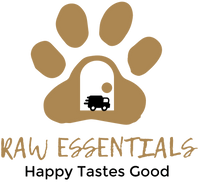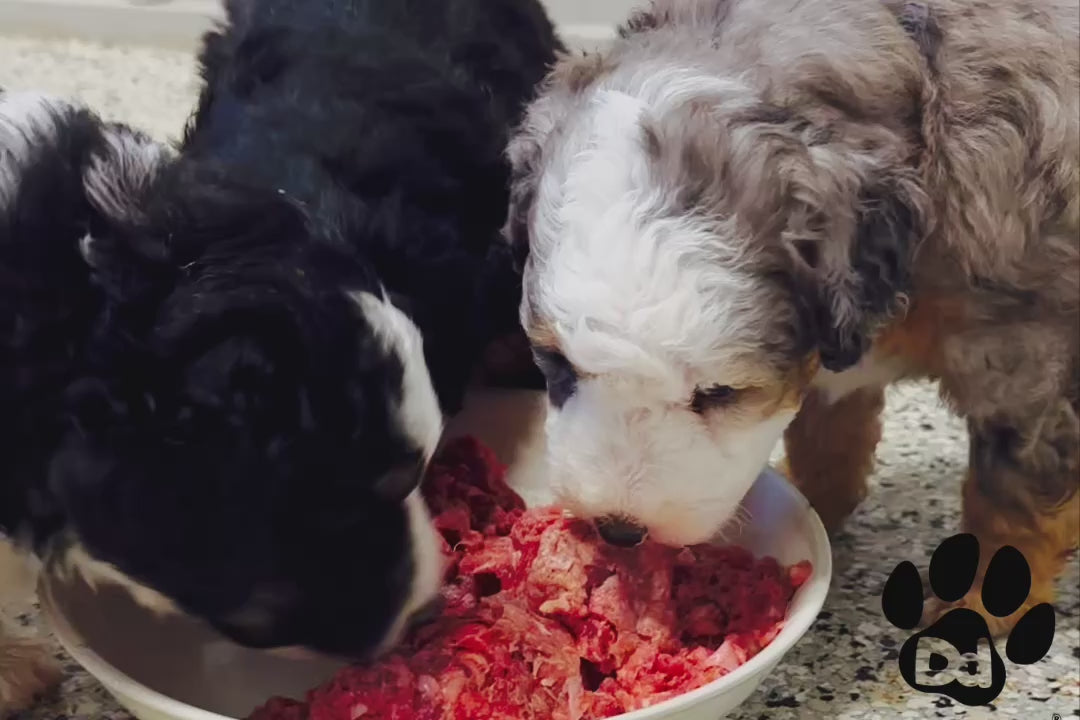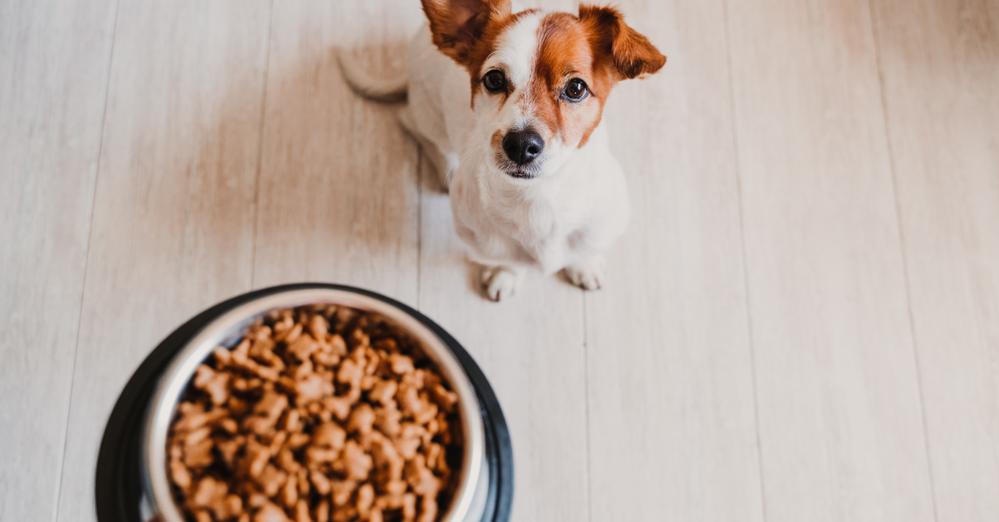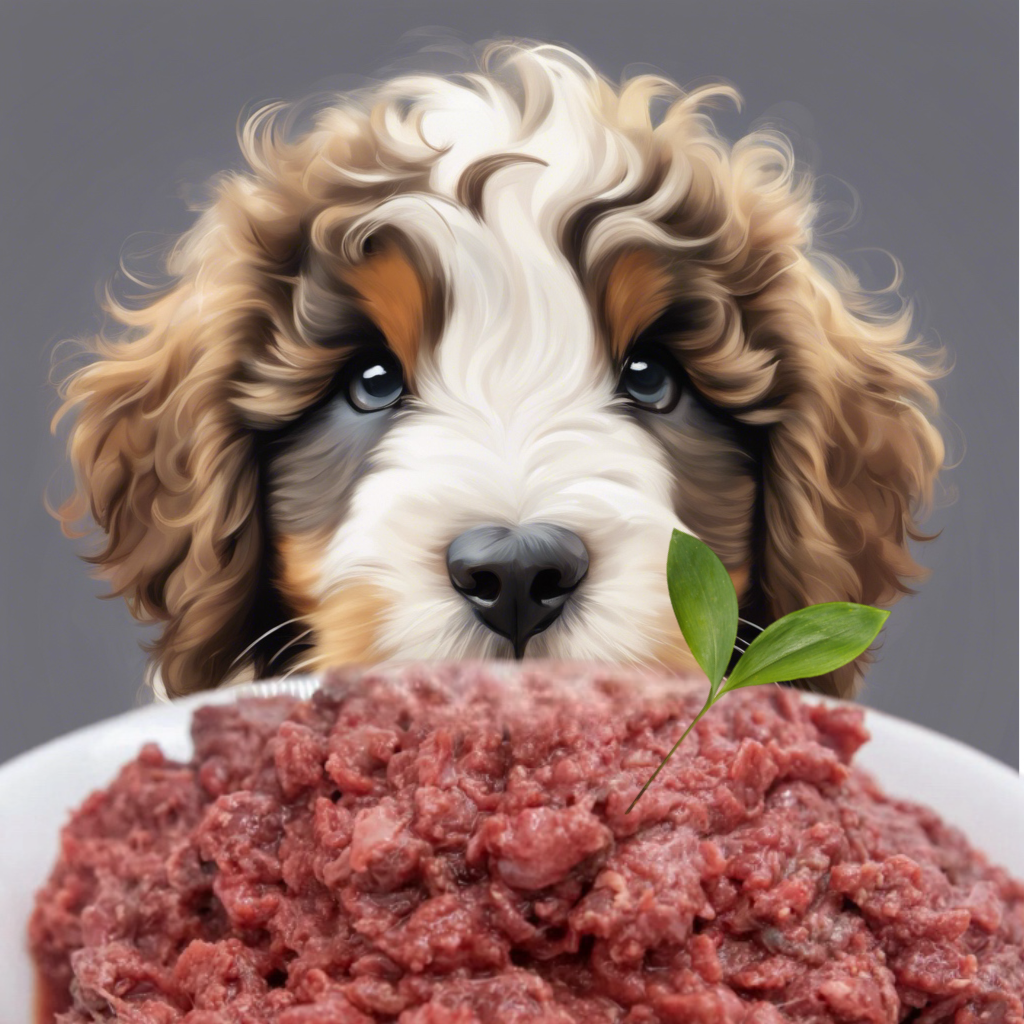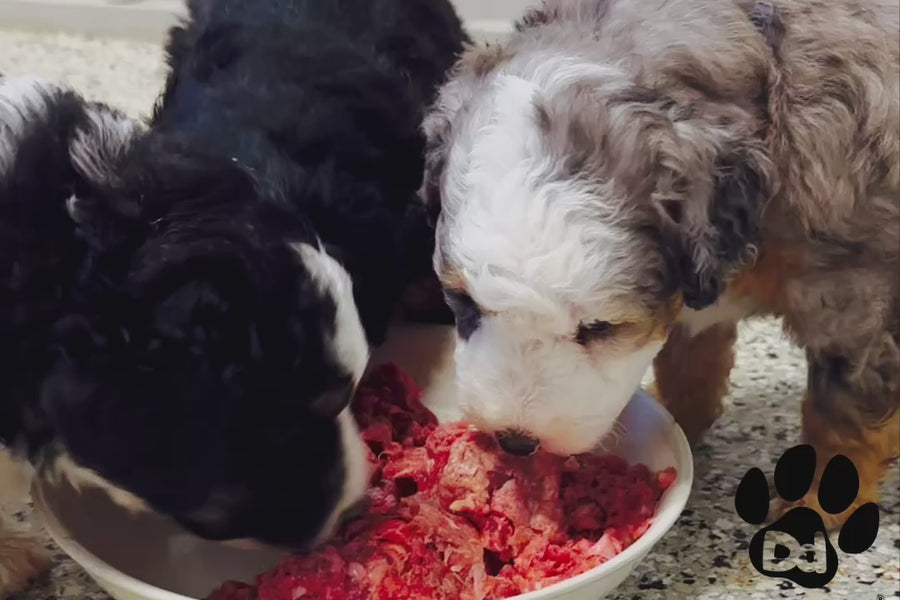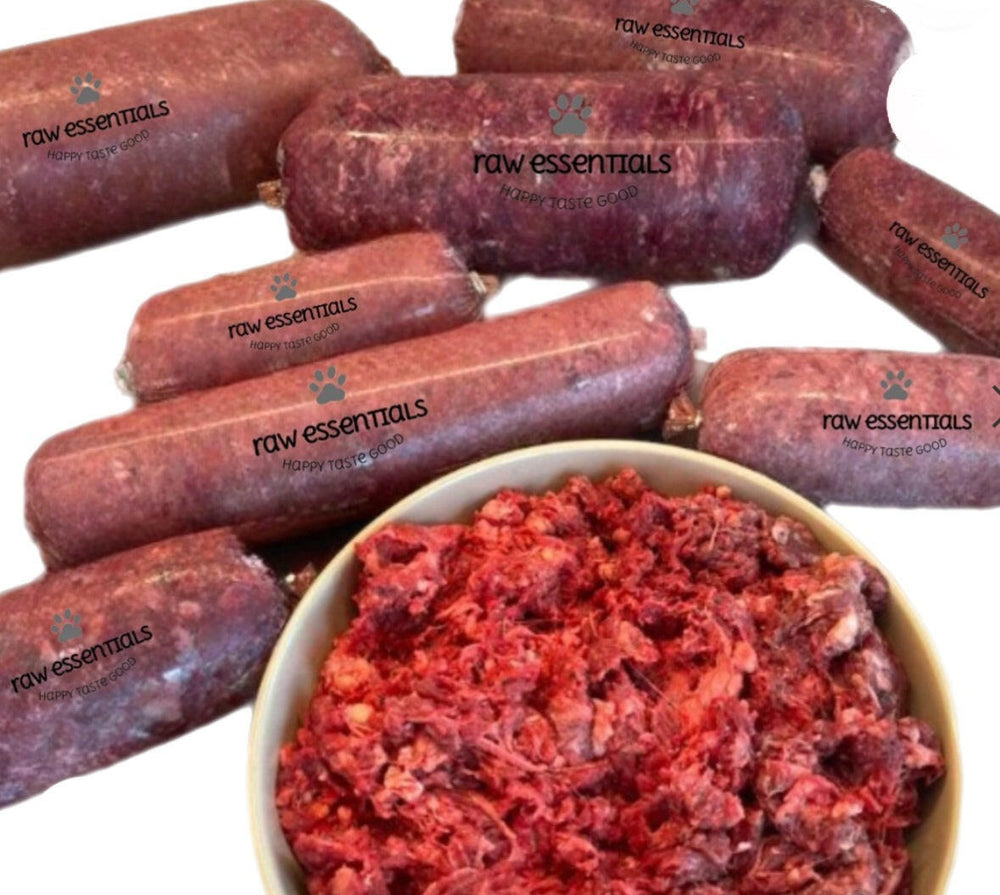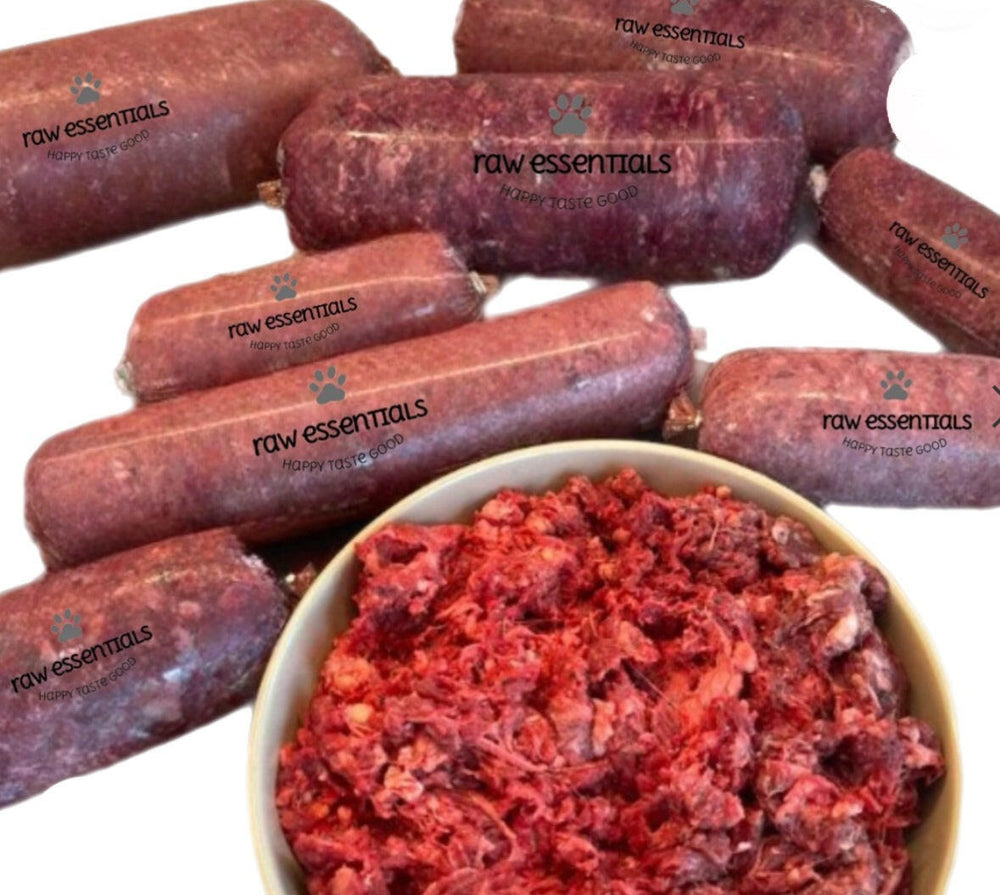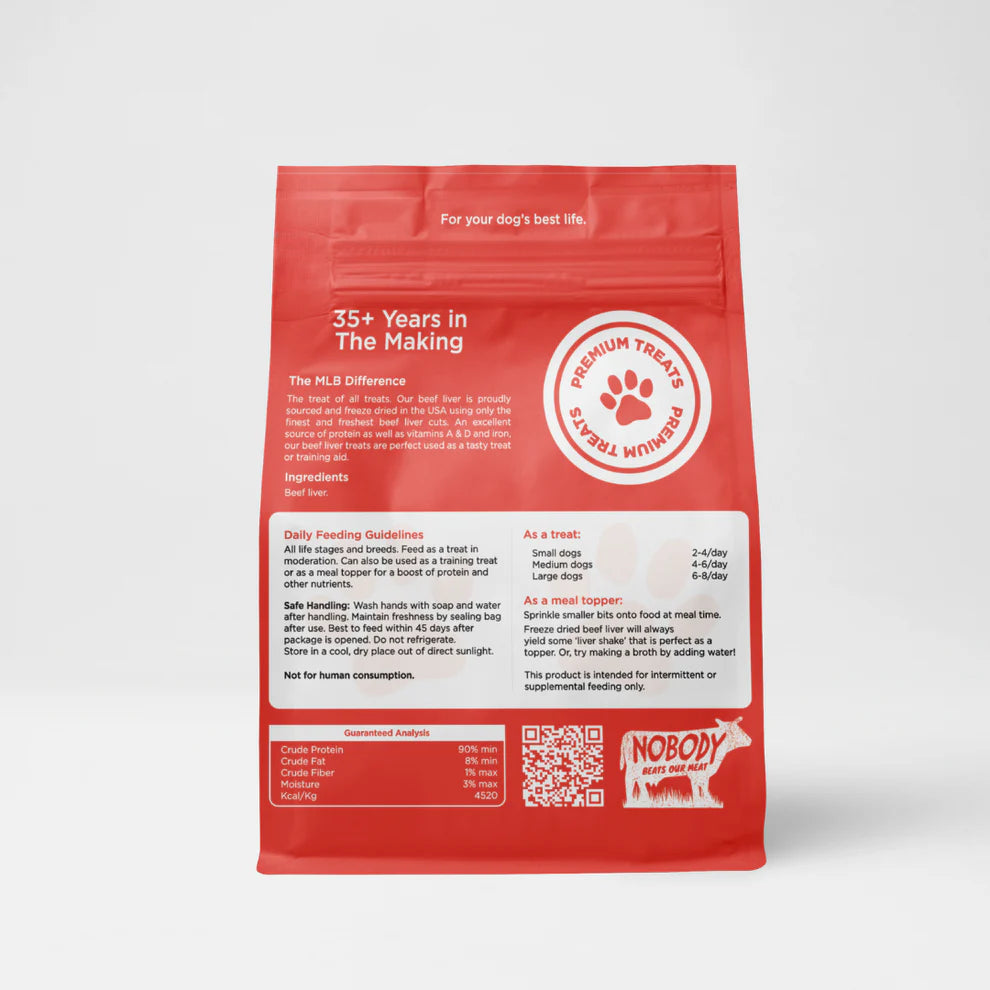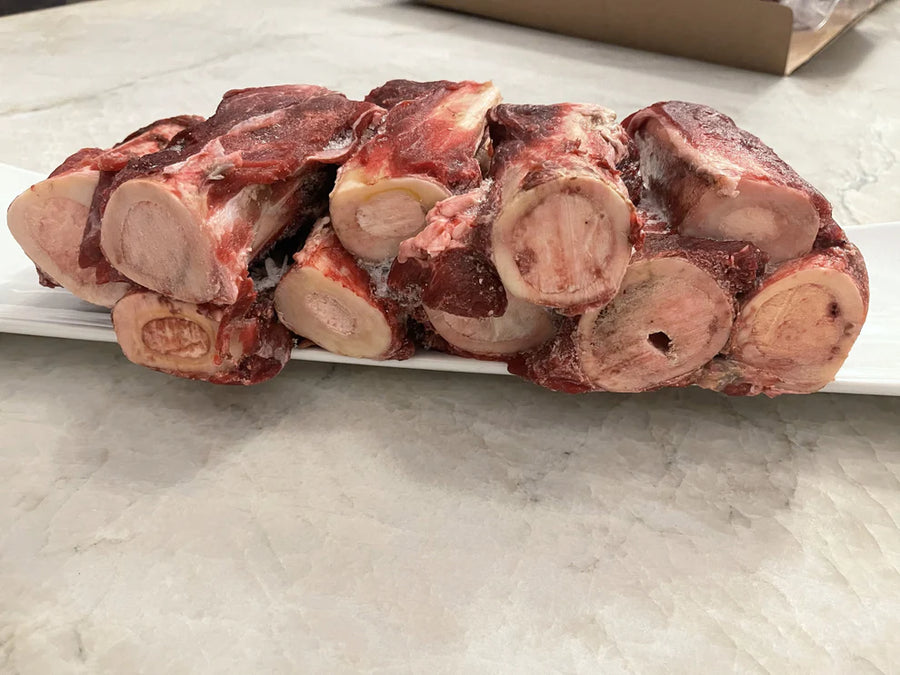Raw Dog Food Recipes
In recent years, more pet owners are choosing raw feeding for their dogs. They want their pets to eat natural, unprocessed foods. Homemade raw dog food recipes are becoming popular for this reason.
This article will explore the benefits of raw dog food. It will also show you how to make easy, healthy meals for your pet. You'll learn about the best ingredients and how to prepare them. This guide will help you give your dog the best diet for their health and happiness.

Key Takeaways
- Discover the nutritional advantages of raw dog food and its impact on your pet's health.
- Learn how to create easy, homemade raw dog food recipes using high-quality, natural ingredients.
- Understand the importance of proper portion control, food safety, and storage when preparing raw meals.
- Explore protein-rich raw food combinations to ensure a balanced and varied diet for your dog.
- Gain insights into transitioning your dog to a raw food diet seamlessly and effectively.
Understanding the Benefits of Raw Dog Food
The raw diet movement for dogs has grown a lot lately. It offers many benefits, like better digestion and more energy. It also makes their coats look great. Let's look at how raw dog food can improve your pet's life.
Nutritional Advantages of Raw Feeding
Raw dog food is full of nutrients. It has vitamins, minerals, and proteins that dogs can easily use. Unlike kibble, it's closer to what dogs naturally eat, making it better for their health.
Improved Digestive Health and Energy Levels
Raw diets are great for a dog's stomach. They're easy for dogs to digest, leading to better nutrient use and less stomach problems. This can make your dog more energetic and look healthier.
Better Dental Health and Coat Quality
Eating raw food helps dogs' teeth. The act of chewing and tearing helps remove plaque and tartar. This can prevent gum disease and tooth loss. Plus, the diet makes their coats shiny and healthy.
Many pet owners see the benefits of raw diets for their dogs. It's clear that this way of feeding is good for their health. Switching to raw food can make your dog feel better and look amazing.
"Switching to a raw diet has been a game-changer for my dog's health. Their coat is shinier, their energy levels have soared, and their digestive issues have disappeared. I highly recommend giving raw feeding a try."
Essential Ingredients for Raw Dog Food Recipes
Creating wholesome raw dog food recipes means knowing the key ingredients. These ingredients provide a balanced, nutritious diet for your dog. A raw diet rich in raw dog food ingredients can improve digestion and make your dog's coat shine. Let's look at the essential parts of a well-rounded, balanced canine diet.
Protein is the base of a raw dog food recipe, with many options. Lean meats like chicken, beef, turkey, and lamb are great. They help build and maintain muscle. Organ meats, like liver and heart, are also key. They pack vitamins and minerals important for your dog's health.
Bones, whether raw or ground, are vital in a fresh pet food diet. They give calcium and phosphorus for strong bones and teeth. Vegetables, such as carrots, spinach, and sweet potatoes, add fiber, antioxidants, and more vitamins and minerals. They support your dog's health.
For a balanced raw dog food recipe, add supplements like fish oil, probiotics, and kelp. They boost skin and coat health, improve digestion, and add nutrients.
https://youtu.be/EDnGC8q0g-o?si=1BNcFGlDOgK_LnCq
Variety is key in a raw diet. Mix different proteins, organ meats, and vegetables. This ensures your dog gets a wide range of nutrients in their balanced canine diet. By using these core ingredients, you can make tasty and raw dog food recipes that nourish your furry friend.
Basic Guidelines for Raw Dog Food Preparation
Preparing raw dog food at home needs careful safety and handling steps. It's important to store food properly, control portions, and prep meals right. This ensures your dog gets the best nutrition from a raw diet.
Safety and Handling Precautions
When dealing with raw raw food safety, keep everything clean. Wash your hands well with soap and hot water before and after handling. Clean all surfaces, tools, and containers used for raw food.
Keep raw ingredients away from cooked or ready-to-eat foods to avoid contamination.
Portion Control and Serving Sizes
Finding the right dog meal prep portion size is key. Aim for 2-3% of your dog's body weight per day, spread over several meals. Adjust based on your dog's size, age, activity level, and needs.
It's wise to talk to a vet or an experienced raw feeder. They can help you ensure you're giving the right amount of pet food storage to your dog.
Storage and Meal Prep Tips
Keeping raw dog food in good condition is vital. Store raw ingredients in the freezer. Thaw them in the fridge, never at room temperature.
Make individual portions and put them in airtight containers or freezer-safe bags. Label each container with what's inside and the date. This helps you use the oldest items first.
| Preparation Step | Recommended Procedure |
|---|---|
| Handwashing | Use soap and hot water before and after handling raw ingredients. |
| Surface Sanitization | Clean all surfaces, utensils, and containers with a food-safe disinfectant. |
| Portion Sizing | Aim for 2-3% of your dog's body weight per day, divided into multiple meals. |
| Storage | Store raw ingredients in the freezer and thaw in the refrigerator. |
By sticking to these guidelines, you can safely make nutritious raw dog food meals for your pet.
Raw Dog Food Recipes for Beginners
Starting a raw dog food diet can feel overwhelming. But, with the right recipes, it's easy and rewarding. Here are some easy raw dog recipes to help you begin your starter raw diets for your dog.
Chicken and Veggie Bowl
This basic recipe is a mix of simple pet meals. It has diced chicken, carrots, and spinach. Just mix 1 lb of diced chicken, 1 cup of chopped carrots, and 1 cup of chopped spinach. Then, portion it out and serve.
Ground Beef and Organ Meat Mix
For a protein-rich raw dog food recipe, try mixing 1 lb of ground beef with 4 oz of organ meat. Add 1/2 cup of diced sweet potato for extra nutrients. Blend it well and portion it for your pup.
- Chicken and Veggie Bowl
- Ground Beef and Organ Meat Mix
- Turkey and Egg Scramble
When starting a raw diet, introduce new foods slowly and watch your dog's reaction. Always check with your vet to make sure you're meeting your pet's nutritional needs. Enjoy these easy raw dog recipes and simple pet meals as you start your raw feeding journey!
Protein-Rich Raw Dog Food Combinations
It's vital to give your dog a balanced diet for their health. Raw dog food with various high-protein meats is key. Let's look at tasty combinations that make mealtime fun for your pet.
Chicken and Organ Meat Mix
Chicken is a favorite protein for raw dog food. Adding liver, heart, or gizzard makes it even better. This mix is packed with high-protein dog food and essential nutrients.
Beef and Fish Blend
Beef and fish together offer a tasty and diverse pet diets option. Beef is rich in protein, and fish like salmon add omega-3s for healthy skin and coat.
Turkey and Lamb Variety
Mixing turkey and lamb adds excitement to your dog's meals. Turkey is lean and protein-rich, while lamb brings unique flavors and nutrients. It's a great way to add variety to their diet.
When making these meals, always follow safe handling and talk to your vet. A mix of raw meat combinations ensures your dog gets a balanced, tasty diet that boosts their health and energy.
Adding Vegetables and Supplements to Raw Meals
Creating a balanced raw diet for your dog can be enhanced by adding dog-friendly vegetables and pet supplements. These natural ingredients add essential vitamins and minerals. They also boost your dog's health and happiness.
Let's look at the best dog-friendly vegetables and their benefits:
- Carrots: Rich in beta-carotene, which supports eye and skin health.
- Spinach: High in iron, calcium, and antioxidants for a stronger immune system.
- Sweet Potatoes: Packed with fiber, vitamins, and complex carbohydrates for sustained energy.
- Broccoli: Contains sulforaphane, a compound that may reduce cancer risk.
- Pumpkin: Soluble fiber aids digestion and helps with weight management.
Pet supplements are also key in a balanced raw diets. Essential supplements include:
- Calcium: Supports strong bones and teeth development.
- Omega-3 Fatty Acids: Promote healthy skin, coat, and reduce inflammation.
- Multivitamins: Provide a broad spectrum of vitamins and minerals.
When adding vegetables and supplements, follow portion guidelines. Also, watch your dog's individual needs. Always consult with your vet to ensure the right balance of nutrients for your furry friend.
| Vegetable | Nutritional Benefits | Recommended Portion |
|---|---|---|
| Carrots | Rich in beta-carotene, vitamins A and C | 1-2 tablespoons per meal |
| Spinach | High in iron, calcium, and antioxidants | 1/2 cup per meal |
| Sweet Potatoes | Fiber, vitamins, and complex carbohydrates | 1/4 cup per meal |

"Incorporating vegetables and supplements into your dog's raw diet can significantly boost their overall health and well-being."
Common Mistakes to Avoid When Making Raw Dog Food
Switching your dog to raw food can be rewarding. But, it's vital to watch out for common mistakes. Knowing and avoiding these errors helps keep your pet's diet safe and balanced. This supports their health and happiness.
Nutritional Imbalances
One big worry with raw feeding is nutritional imbalances. If you don't get the right mix of proteins, fats, carbs, minerals, and vitamins, it can harm your dog. To avoid this, it's key to follow established guidelines for making complete and balanced meals.
Food Safety Errors
When making raw dog food, handling and storing it safely is crucial. Ignoring safety steps, like keeping food at the right temperature, can lead to bacterial contamination. This is dangerous for your dog. Always follow strict food safety rules, including cleaning and sanitizing everything well.
Transition Period Problems
Switching your dog's diet too quickly can upset their stomach. To avoid this, slowly introduce the raw food over weeks. This lets their digestive system adjust. Being patient and planning the transition carefully is key to a smooth switch.
By avoiding these raw feeding mistakes, pet diet errors, and focusing on safe raw food practices, you can give your dog a healthy, balanced diet. This diet will support their overall health and happiness.
| Mistake | Consequence | Solution |
|---|---|---|
| Nutritional Imbalances | Deficiencies or excesses that can harm your pet's health | Follow well-established raw feeding guidelines to formulate complete and balanced meals |
| Food Safety Errors | Increased risk of bacterial contamination, posing a threat to your dog's health | Diligently follow food safety protocols, including thorough cleaning and sanitization of surfaces and utensils |
| Transition Period Problems | Digestive upset, such as diarrhea or vomiting | Gradually introduce the raw food over the course of several weeks, allowing your dog's digestive system to adapt |
"Proper preparation and attention to detail are key to ensuring your dog's raw diet is both safe and nutritionally complete."
Transitioning Your Dog to a Raw Food Diet
Changing your dog's diet from kibble to raw food is a step-by-step journey. It's key to be patient and careful to keep your dog healthy and happy.
Start by adding a little raw food to their usual kibble. Mix it in and slowly increase the raw food amount over weeks. This helps their body get used to the new diet without upset.
- Watch how your dog reacts to the change. Look at their energy, stool, and health to make sure they're doing well.
- If they have digestive problems, like diarrhea or vomiting, slow down the change. Talk to your vet for advice.
- Use different proteins like chicken, beef, and fish to make sure they get all the nutrients they need.
The transition to a raw diet can take weeks or months. Stay patient and keep going. You'll see big improvements in your dog's health and happiness.
"The key to a successful raw diet transition is to take it slowly and listen to your dog's body. With time and care, you'll see the amazing benefits of switching to raw diet."
Conclusion
Raw dog food has many benefits for your dog's health. It improves their nutrition, digestion, and coat. By making homemade raw meals, you give your dog a diet that's natural and right for them.
Switching to raw food needs patience and a slow start. Talk to your vet or a pet nutrition expert to make sure you're doing it right. With the right help, you can enjoy the raw feeding benefits, give your dog homemade dog nutrition, and live a more natural pet care life.
Keep learning, trying new recipes, and seeing the good changes in your dog. With what you've learned here, you're ready to give your dog a healthy, natural diet.
FAQ
What are the nutritional advantages of feeding my dog a raw diet?
Raw diets are great for dogs. They improve digestion, boost energy, and make teeth and coats shine. The natural ingredients in raw food are closer to what dogs naturally eat.
How do I ensure my homemade raw dog food is balanced and nutritious?
For a balanced diet, mix high-quality proteins, organ meats, bones, veggies, and supplements. The right mix and variety are crucial for your dog's health.
What safety precautions should I take when preparing raw dog food at home?
Always follow food safety rules when handling raw ingredients. Wash hands and surfaces well, avoid mixing foods, and store everything safely. This keeps your dog healthy.
How do I transition my dog to a raw food diet?
Start by adding small amounts of raw food to their current diet. Slowly increase the raw food over weeks. Watch how your dog reacts and be patient.
What are some common mistakes to avoid when making raw dog food at home?
Don't mess up on nutrition, safety, or the transition. Stick to recipes, handle food safely, and introduce raw food slowly. This ensures a smooth transition for your dog.
